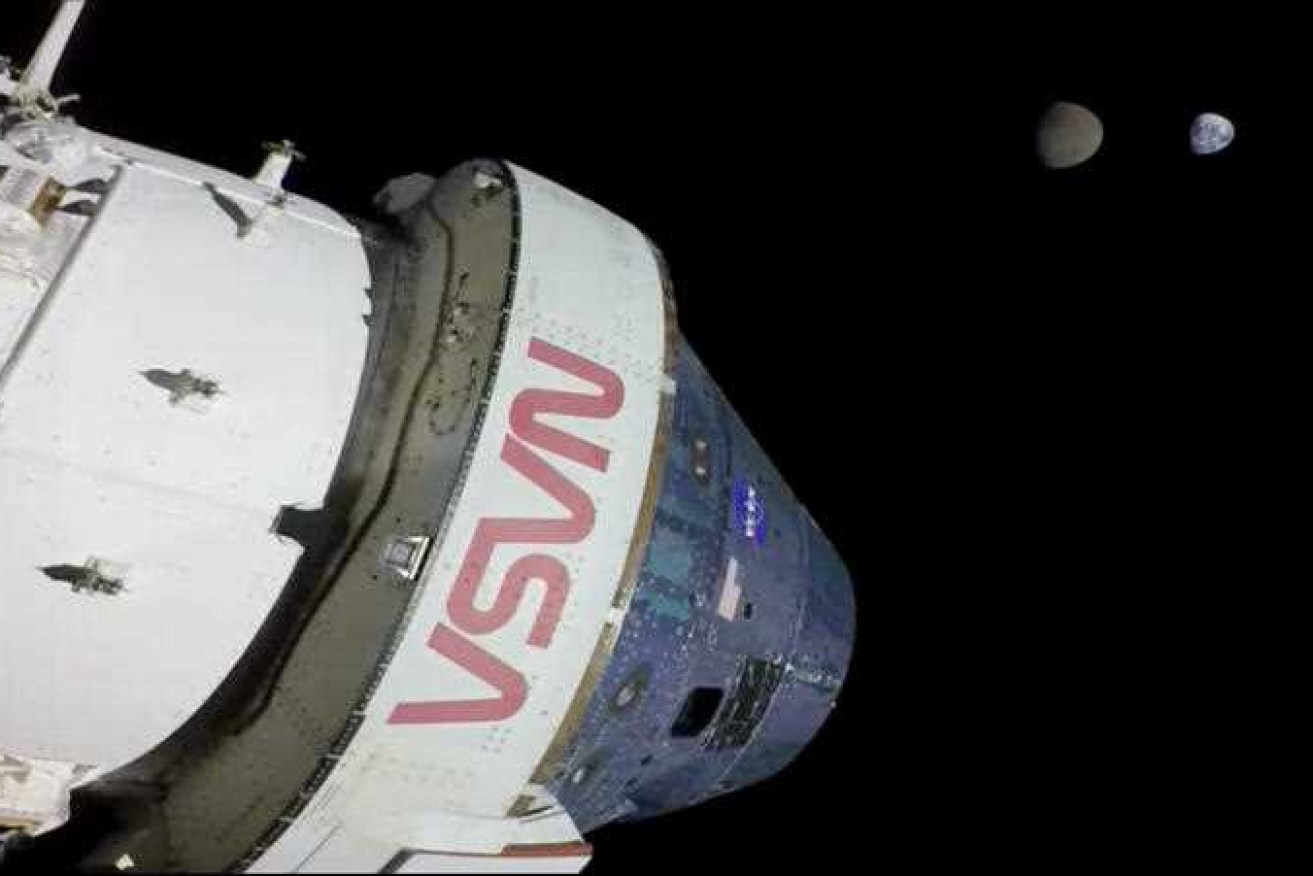NASA’s moon capsule heads for splashdown

NASA's Orion space capsule will shortly end its journey around the moon and back. Photo: AP
NASA’s uncrewed Orion capsule is hurtling through space on the final return leg of its voyage around the moon and back, winding up the inaugural mission of the Artemis lunar program 50 years to the day after Apollo’s final moon landing.
The gumdrop-shaped Orion capsule, carrying a simulated crew of three mannequins wired with sensors, was due to parachute into the Pacific Ocean on Sunday near Guadalupe Island, off Mexico’s Baja California peninsula.
Orion was nearing the end of its 25-day mission less than a week after passing about 130 kilometres above the moon in a lunar fly-by and about two weeks after reaching its farthest point in space, nearly 434,500 km from Earth.
After jettisoning the service module housing its main rocket system, the capsule was expected to re-enter Earth’s atmosphere at 39,400km/h – more than 30 times the speed of sound – for a fiery, 20-minute plunge to the ocean.
Orion blasted off on November 16 from the Kennedy Space Centre at Cape Canaveral, Florida, atop NASA’s towering next-generation Space Launch System (SLS), now the world’s most powerful rocket and the biggest NASA has built since the Saturn V of the Apollo era.
The debut SLS-Orion voyage kicked off Apollo’s successor program, Artemis, aimed at returning astronauts to the lunar surface this decade and establishing a sustainable base there as a stepping stone to future human exploration of Mars.
By coincidence, the return to Earth of Artemis I unfolded on the 50th anniversary of the Apollo 17 moon landing of Gene Cernan and Harrison Schmitt on December 11, 1972. They were the last of 12 NASA astronauts to walk on the moon during a total of six Apollo missions starting in 1969.
Compared with Apollo, born of the Cold War-era US-Soviet space race, Artemis is more science driven and broad-based, enlisting commercial partners such as Elon Musk’s SpaceX and the space agencies of Europe, Canada, and Japan.
It also marks a major turning point for NASA, redirecting its human spaceflight program beyond low-Earth orbit after decades focused on space shuttles and the ISS.
-Reuters








